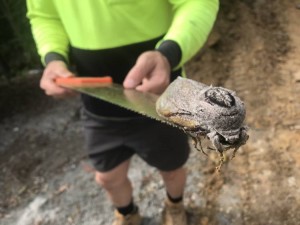Spotlight on Australia: Giant Wood Moth
Wednesday, June 16th, 2021
A giant wood moth was found at Mount Cotton State School in Queensland by builders.
Credit: © Mount Cotton state school
Australia is famous for its unique culture, metropolitan cities, and unusual wildlife, among other things. Each week, this seasonal feature will spotlight one of Australia’s many wonders.
Last month, the children at Mount Cotton State School in Queensland, Australia, got a new class pet: a giant wood moth. Construction workers found the grey, fuzzy-looking insect resting on a side of the building. Given that the giant wood moth can have a wingspan of up to 9 inches (23 centimeters), it must have been covering a good portion of the wall!
The giant wood moth, or Endoxyla cinereus, spends much of its life as a larva inside Australia’s native eucalyptus trees. A larva is an active, immature stage of an animal. A giant wood moth remains in this larva stage for three years. But, as an adult, the moth lives for only one week. It dies after mating and laying eggs.
The students enjoyed looking at the moth. But they couldn’t bring the moth to such school activities as playing at the park or eating in the cafeteria. Among many other reasons, the giant moth couldn’t eat school lunch, because adult moths do not eat. Instead, they get energy from fat reserves that they build up during the larva stage.
The workers who discovered the giant wood moth recognized the insect by its large size and grey color. They did not mistake the moth for its colorful counterpoint: the butterfly.
Moths differ from butterflies in a number of important ways. For example, most moths fly at dusk or at night. The majority of butterflies fly during the day. Among most moths, the hind wing is attached to the front wing by a hook or set of hooks, called a frenulum. Butterflies lack a frenulum. In addition, most butterflies have antennae that widen at the ends and resemble clubs. The antennae of most moths are not club-shaped. Many male moths have larger antennae than do female moths.


